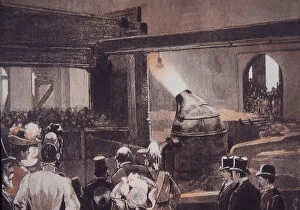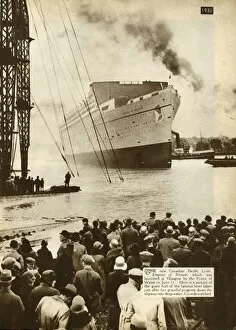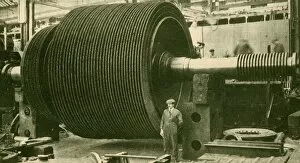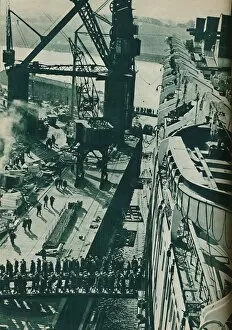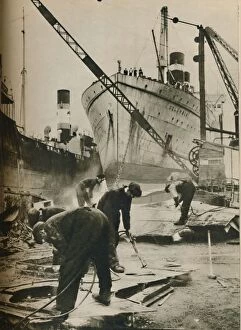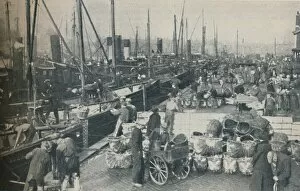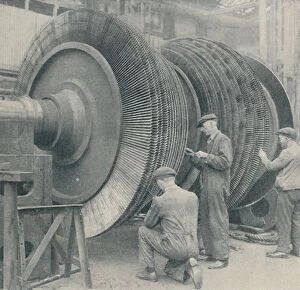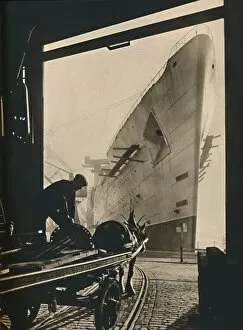John Brown And Co Collection
"John Brown and Co: A Legacy of Innovation and Engineering Excellence" Step back in time to 1889
For sale as Licensed Images
Choose your image, Select your licence and Download the media
"John Brown and Co: A Legacy of Innovation and Engineering Excellence" Step back in time to 1889, where visitors were captivated by the mesmerizing Bessemer Steel Process at the renowned John Brown and Co foundry. This hand-coloured engraving transports us to an era when industry was booming, showcasing the company's commitment to technological advancements. Fast forward to 1930, as Glasgow witnesses a momentous event - the launch of the majestic Empress of Britain. Amidst a sea of onlookers, this iconic vessel proudly displays the craftsmanship synonymous with John Brown and Co. The unknown creator captures this historic occasion for posterity. In another scene from around 1930, we witness a pneumatic riveter skillfully cutting portholes into the side of a liner. This image exemplifies John Brown and Co's dedication to precision engineering techniques that ensured both functionality and aesthetic appeal. The turbine blading without casing is showcased in yet another masterpiece created by none other than John Brown & Company themselves during this period. Their expertise shines through as they push boundaries in turbine design, setting new standards for efficiency. Moving back in time slightly to approximately 1910, we catch a glimpse of one of Cunard Line's most celebrated liners - Lusitania. Although its creator remains unknown, it is evident that this ship embodies excellence in shipbuilding craftsmanship attributed to John Brown and Co. Venturing further into history brings us face-to-face with Clydebank's fitting-out basin at John Brown and Company's shipbuilding yard in 1937. Here we witness skilled workers meticulously preparing vessels for their maiden voyages – an intricate dance between artistry and engineering prowess. On Scotland's Firth of Forth lies Bo'ness West Lothian; here unfolds an intriguing scene depicting shipbreaking activities from that same year – testament not only to construction but also decommissioning efforts undertaken by John Brown and Co.

